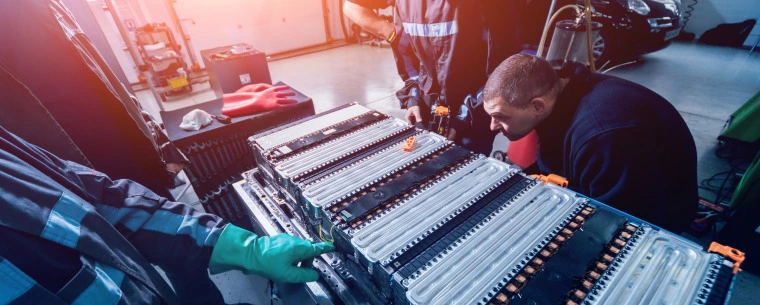Difference Between EV & Standard Car Batteries
Published on: Monday, 01 August 2022 | Author: Jack Dreyer
With the huge increase in electric cars on the road and the noticeable advancements in electric car technology, it feels like it won’t be long until combustion engines are a thing of the past. But before we’re all in flying cars, there’s still quite a way to go.
One of the main differences between electric and normal cars is, of course, the electric motor. This piece of equipment relies on efficient batteries to store the energy required to actually get anywhere. But what’s different about electric car batteries and normal car batteries?
Let’s have a look.
Size: electric & combustion car batteries serve different purposes

Primarily, the main difference between the two battery types is what they’re actually intended to do. A normal combustion engine battery is reserved for a few things only; primarily, powering the starter motor & running auxiliary components like lights, alarms, and the radio.
An electric car battery, on the other hand, powers these auxiliary components but is also primarily responsible for providing a huge amount of power to move the car.
If you think that a normal car battery runs down after a night of the lights accidentally left on, you can imagine that a battery with enough capacity to move a car would have to be remarkably different.
In order to store so much power, electric car batteries are at present actually stored in the entire floor of the car. Imagine a phone battery but on a much larger scale!
The batteries are usually made with different materials

One of the dramatic differences is the material that’s used to make the batteries. Normal car batteries don’t need to hold a great deal of power, and they’re recharged by the engine once they get the car going – so they don’t need to be very big.
As such, it’s quite economical to make them out of a Lead Acid compound because lead is quite cheap and its significant weight doesn’t matter when it’s so small compared to the car.
Electric car batteries, on the other hand, need to be able to output huge amounts of power instantaneously and be as light as possible – after all, the heavier the car, the more power required to move it.
The best known way for this to be possible at the moment is to use a Lithium Ion mixture for the battery. Because of the chemical make-up of lithium ion batteries, they’re able to be remarkably light, to be discharged significantly without any damage, and output large amounts of power in short bursts when required.
Different voltage

The last key difference is the voltage that the batteries operate at. Normal vehicle batteries, much like camper van leisure batteries, operate on a 12v basis. This is fine for powering small electronics like a car stereo or the headlights, but isn’t able to provide the power fast enough to run powerful motors. Or, at least, you’d need really big cables to do so.
Electric car batteries often run on voltages as high as 600v – which is two and half times the voltage of normal household electricity! This means that the cables are able to be thin enough to be physically manageable and economically viable – but it also means that mistakes under the hood can prove disastrous.
Trust experts with maintenance & repairs
Due to how dangerous the batteries in electric & hybrid vehicles can be, it’s essential that you only get maintenance & repair work done by trained professionals.




